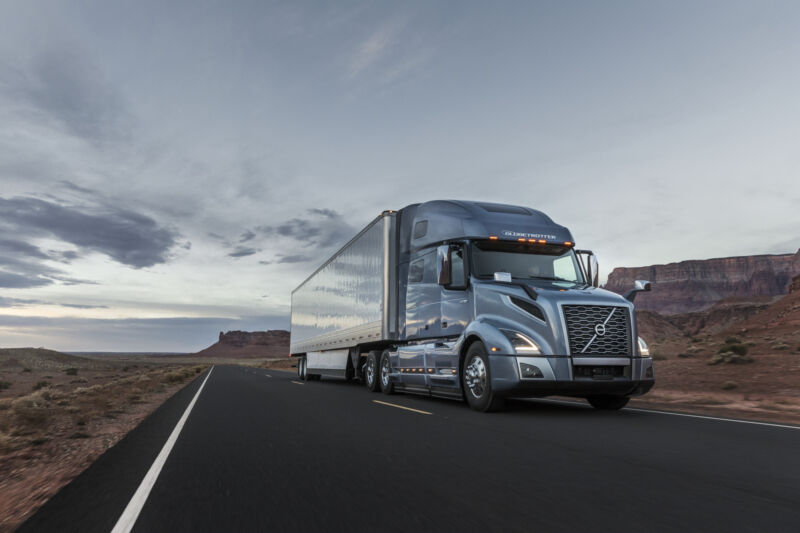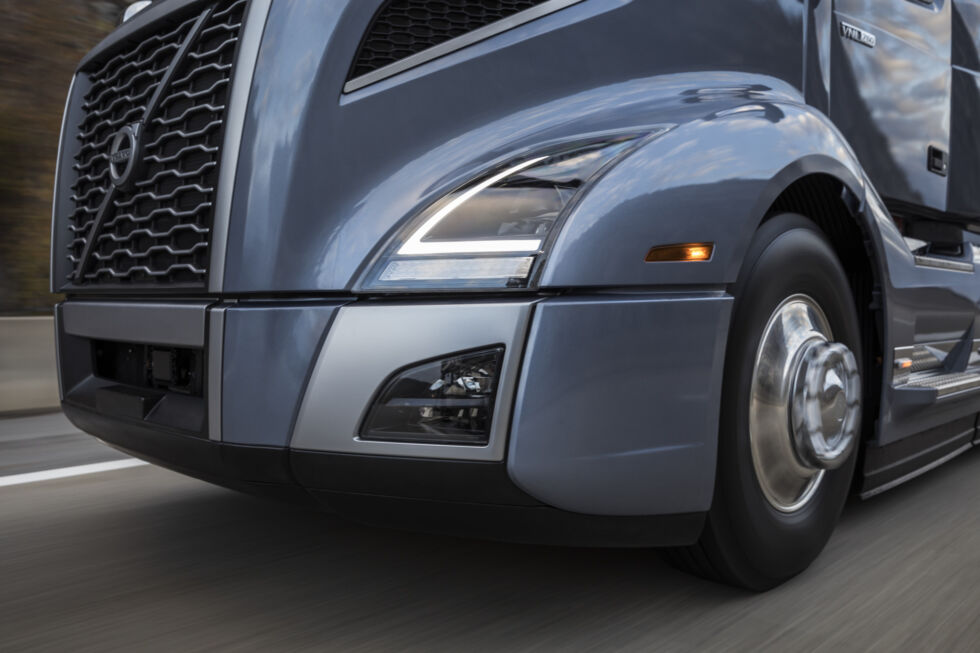
Volvo Trucks North America
A while ago we checked out Super Truck II, a Department of Energy program that has been challenging the makers of Class 8 heavy trucks—the ones that haul up to 80,000 lbs (36.3 tonnes) of freight. Truck companies like Daimler Trucks North America and Volvo Trucks North America were challenged to build a big rig that used 50 percent less fuel than the machines on the road in 2017, and they stepped up.
It’ll be a while before all of the efficiency improvements make their way onto production trucks, as that program has only just come to a close. But the truck makers are already starting to apply some of the lessons to production vehicles. Like Volvo’s new VNL, a Class 8 long-haul truck that’s been purpose-built just for our market.
“It’s replacing the previous generation that had been around for several decades,” explained Keith Brandis, VP of systems and solutions at VTNA. That was based on a global cab concept and design, where this was a completely new clean sheet for North America.”
Some readers are bound to be a bit disappointed that the VNL doesn’t improve fuel efficiency by quite as much as that ambitious research project. “I know 10 percent fuel economy doesn’t sound like much. But on a heavy-duty truck, when you’re going 8 to 8.8 miles per gallon [27–30 L/100 km], and you’re traveling 125,000 miles a year (201,000 km), that is a huge return for the customer,” Brandis countered.

Volvo Trucks
Truck operators “want them to be productive out there and help them be profitable, help them be sustainable in their business,” explained Chris Stadler, product marketing manager at VTNA. “So that’s what they’re looking for that truck that’s going to help improve their bottom line.”
Reduced fuel costs certainly feed into that, but VNL is about more than just using less diesel. Volvo being Volvo, it’s also focused on making the truck safer. That helps the trucks keep running and protects the asset (plus its cargo), but it should also help fleets attract or retain their drivers—something more important than ever as the US currently needs about an extra 80,000 truck drivers.
I was curious about the North American-specific adaptations the VNL had compared to the previous global cab. For one thing, they’re not speed-limited, unlike heavy-duty trucks in Europe, which aren’t allowed to go faster than 56 mph (90 km/h). “So we had to take that in consideration in the design,” explained Stadler.
That meant a focus on reducing drag. “We made sure that design of this truck is fully aero’d up, as much as we can possibly put together on this truck. And we take the learnings that we got from Super Truck and Super Truck II to apply those to this design,” Stadler said. For example, there are cab-side fairings that connect to the trailer and keep the airflow from detaching between the tractor and trailer that boost overall fuel efficiency by 7 percent.
